Destination Stewardship Report – Winter 2022 (Volume 2, Issue 3)
This post is from the Destination Stewardship Report (Winter 2022, Volume 2, Issue 3), an e-quarterly publication that provides practical information and insights useful to anyone whose work or interests involve improving destination stewardship in a post-pandemic world.
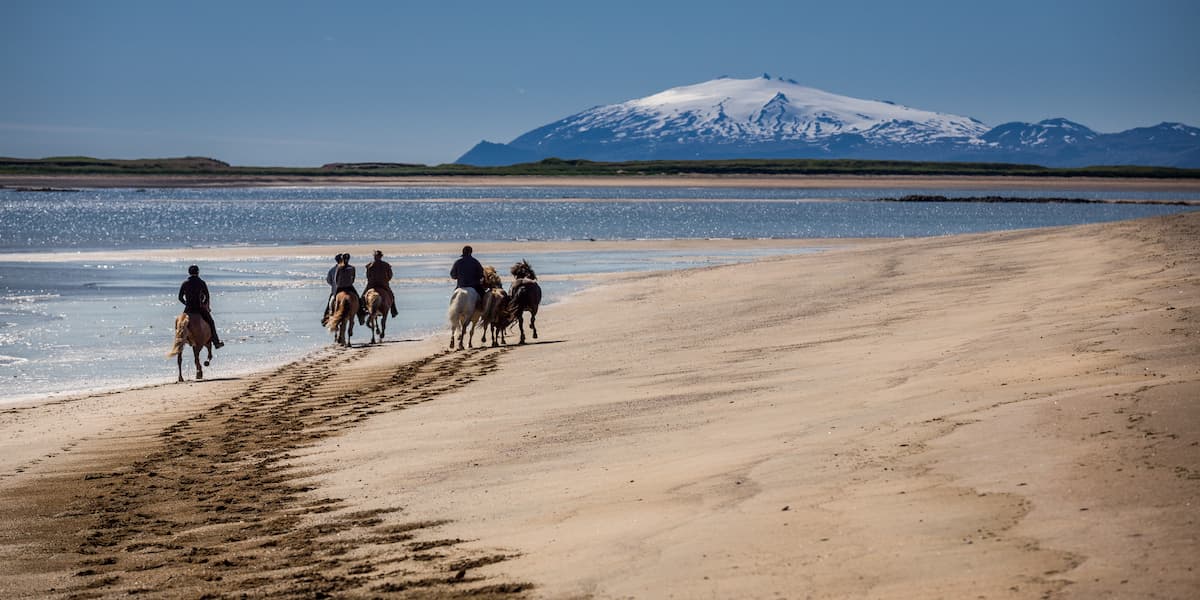
The Snaefell shield volcano rises above a beach. Its capping glacier, Snaefellsjokull, is the centerpiece of its namesake national park at the far western end of the Snæfellsnes peninsula. [Photo courtesy of Visit Iceland]
Doing It Better: Snæfellsnes Peninsula, Iceland
On a long, skinny Icelandic peninsula, five small municipalities have teamed up to create a modest destination stewardship council and supporting network. Tiffany Chan, with Jonathan Tourtellot, explores the Snæfellsnes model of sustainable collaboration – a work in progress that has already earned a platinum sustainability rating.
A Council-and-Network Approach to Destination Stewardship
Iceland’s narrow Snæfellsnes peninsula pokes out 90km westward into the far North Atlantic from a point partway between Reykjavík and Vestfirðir (the Western Fjords). Its wild and diverse landscapes offer a blend of culture, nature, and history – waterfalls and lava fields, black and white sand beaches, an archeological site, a glacier-capped strato-volcano in Snaefellsjokull National Park, and rich cultural heritage woven into Icelandic folklore and history. The peninsula is a two-hour drive north of Reykjavík, putting it within day-trip range of tourists based in Iceland’s capital city.
Lots of tourists.
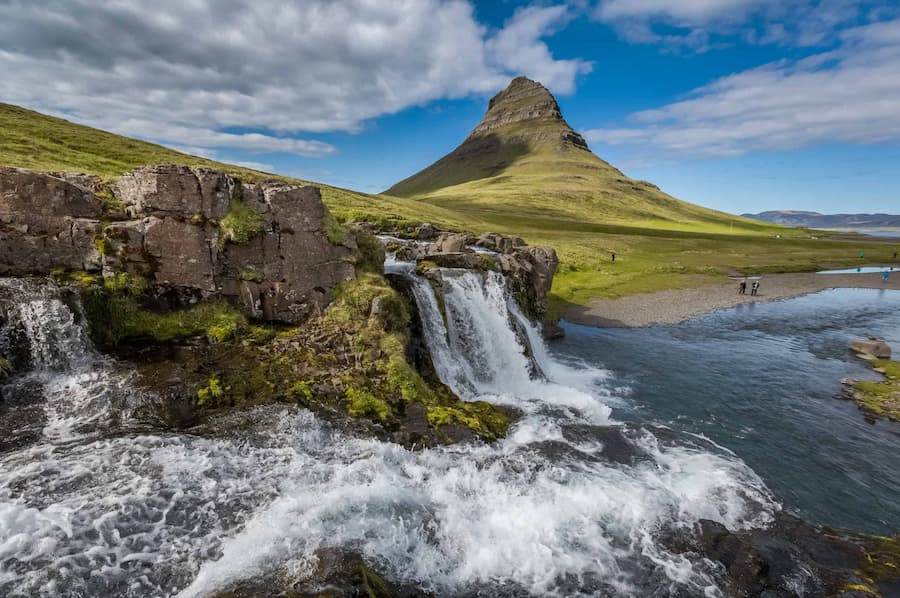
The dramatic peak of Kirkjufell rises above the Kirkjufellsfoss waterfall, a location on the northern side of the peninsula made popular by the influence of Instagram. [Photo courtesy of Visit Iceland]
To disperse the masses, Iceland encourages visitors to explore more of the country, to go beyond Reykjavik and nearby day trips. Traveling slower and staying longer in each region is the responsibility of the traveller, but creating incentives to do so, and do so sustainably, fall to the destination itself. Snæfellsnes (“snow mountain peninsula”) has been at the forefront of sustainable destination development in Iceland. Certified by EarthCheck under Global Sustainable Tourism Council criteria, this regional standout employs a collaborative approach to sustainable tourism and destination stewardship.
Sustainability is Rooted in Nature
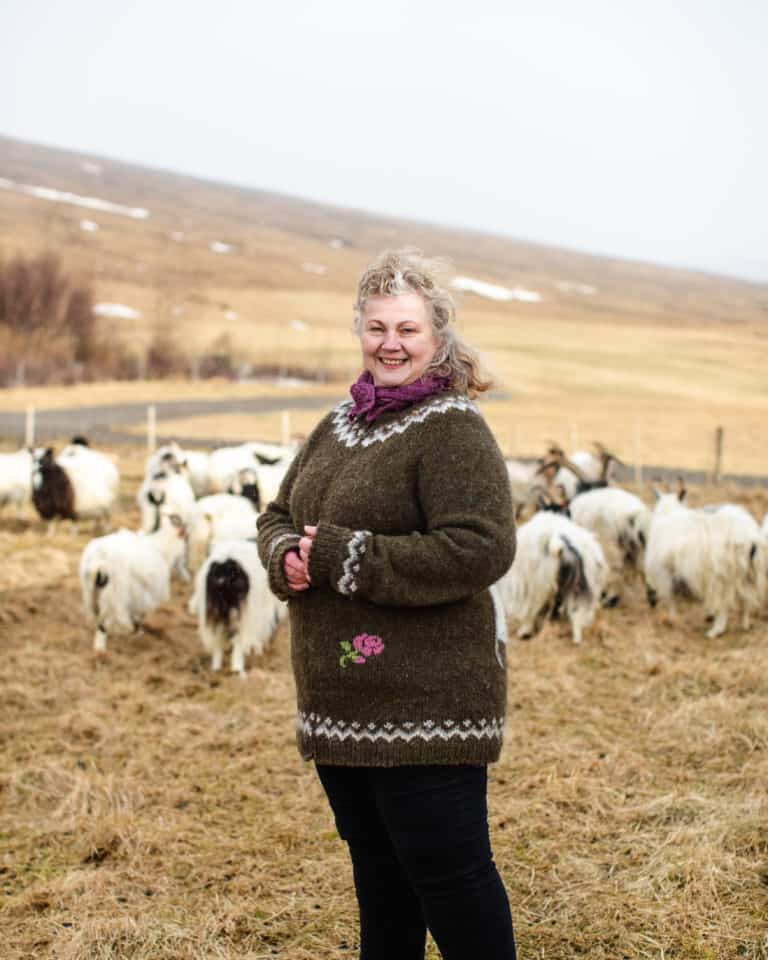
A significant portion of the Snæfellsnes population still lives on small farms. [Photo courtesy of Visit Iceland]
Overall, Snæfellsnes has taken a collaborative approach to various areas of sustainable development, including the creation of Snæfellsnes Regional Park. The regional park was founded in 2014 by the five municipalities, non-government organizations, and other stakeholders to channel cooperation and share the area’s unique attractions with visitors and residents alike.
Additionally, for Snæfellsnes, destination certification was a step towards meeting sustainability goals. Snæfellsnes was the first European destination to receive an EarthCheck certification, in 2008. The certification program has been an effective project, keeping the environment, society and economy top of mind. According to the 10-year review on Snæfellsnes as an EarthCheck Destination, waste in landfills has been reduced by almost half, greenhouse gas emissions and energy performance are much improved, and the development of environmental programs and social initiatives have increased. Snæfellsnes Peninsula is now a certified platinum destination under the EarthCheck system.
Collaborative Governance
Collaboration in Snæfellsnes is based on an informal network of overlapping organizations.
• Byggðasamlag Snæfellinga is the destination stewardship council, made up of mayors from each of the five municipalities –- Snaefellsbaer, Helgafellssveit, Grundarfjörður, Stykkishólmur, and Eyjaog Miklaholtshreppur.
• Natturustofa Vesturands (the West Iceland Nature Research Center) manages Umhverfisvottun Snæfellsness (the Snæfellsnes Sustainability Program).
• The Snæfellsnes Regional Park, West Iceland Marketing, tourism unions, and the private sector are all involved in sustainable development as well.
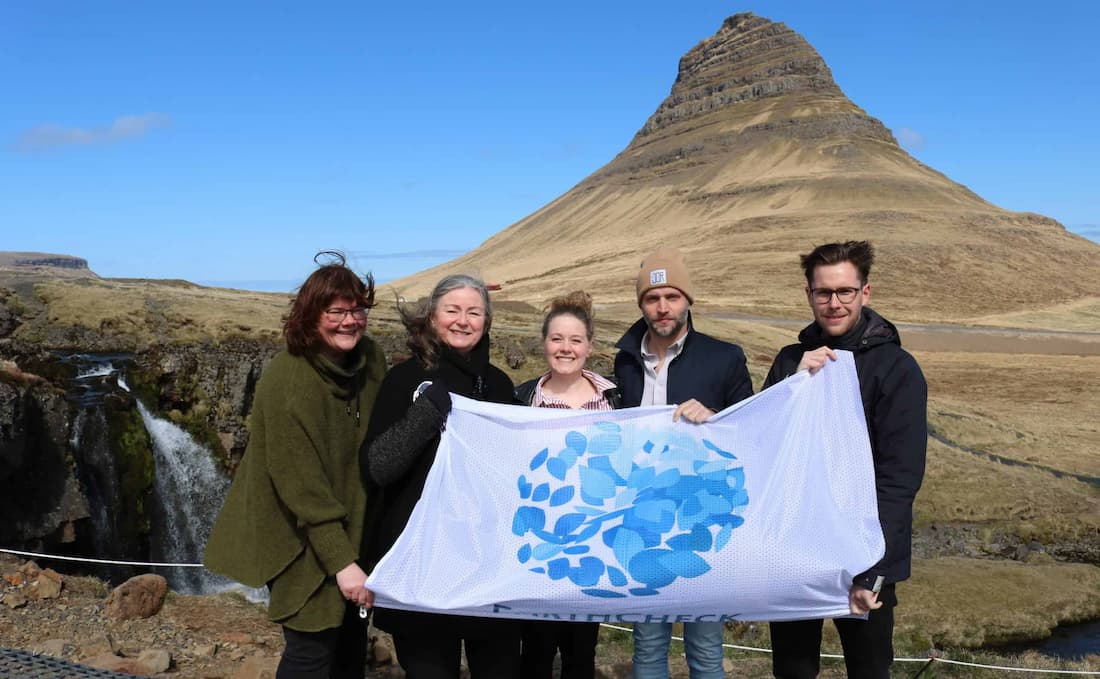
The Snæfellsnes EarthCheck Green Team celebrates 13 consecutive years of certification. [Photo courtesy of Guðrún Magnea Magnúsdóttir]
Although several tourism councils and stakeholders make up this informal network, they all share common goals when it comes to the future of Snæfellsnes. To address issues in the region, meetings are called, often in neighboring farms. The community comes together, and the discussions begin. As Ragnhildur puts it, “the beauty of our work is cooperation. ‘Þetta reddast’ is a common slogan in Iceland, meaning ‘it will work out.’” The community is committed and invested in the sustainable development of Snæfellsnes. Ragnhildur continues: “Those who have moved to Snæfellsnes and are involved with tourism have never seen such strong tourism collaboration in a rural area. This is especially true of those who come from other rural areas. They are impressed with the work that we’ve done.”
Sustainable Management as a Community
Oftentimes, political changes alter the course of sustainability progress. In Snæfellsnes, an election is held every four years. If not re-elected, the mayors all change at the same time, which can delay certain initiatives, but it does not impact the destination management plan in a significant way. However, multi-stakeholder involvement doesn’t come without challenges. Every municipality is different in size, funding and resources, with the smallest being 66 people with a tiny budget. There has been formal and informal dialogue about the potential of combining two municipalities, possibly even all five.
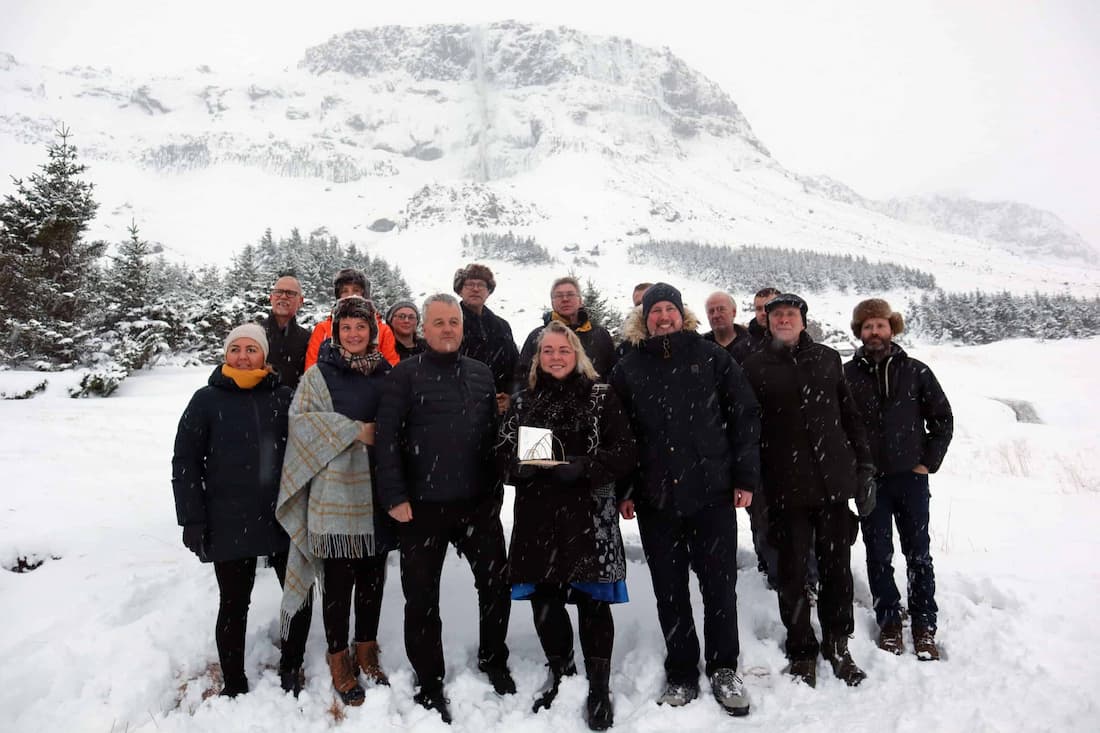
The snowy destination of Bjarnafoss receives an environmental award in 2018. [Photo by Heimir Berg]
Sharing a common vision allows for cooperation through environmental conservation and promotion.
Multiple parties are also involved in regional planning. Over 200 people from various groups and stakeholders come together, including the five municipalities, a local planning committee, and a local steering committee. The five municipalities appoint a regional planning committee to overlook zoning under their supervision. Every municipality has an individual plan, which must also align with the regional plan.
The municipalities are financially responsible for the social services and schools within their own community but collectively take care of the Visitor Center, the history museum, and the sustainability program, including the EarthCheck Certification.
The regional park is funded by municipalities, the tourism union, the workers union, and farmers associations. Through the regional park, Ragnhildur Sigurðardóttir is responsible for training staff and running the Visitors Center. Guðrún Magnea Magnúsdóttir oversees the EarthCheck Standard and sustainability program, holding courses at the center. The Visitor Center is located at Breiðablik, the entrance to Snæfellsnes. It is open daily and provides tourists with trip planning information to help guide their visit within the region.
Most residents share an understanding that protecting natural resources benefits the entire community, but there are limits. “It would be great to have more happening in the Visitors Center, but once the work has been done, reality hits. You have to hire employees, pay for electricity costs and all that comes with running the center,” says Ragnhildur. “When the five municipalities come together, they also have to consider money that is needed elsewhere, such as building a kindergarten.”
Projects & Activities
The Regional Park is working on two important projects:
• Taking the initial steps for applying to become a UNESCO Biosphere destination.
• Destination branding and marketing under the “Choose or Stay” policy.
Choose or Stay is a national strategy for converting daytrippers from Reykjavík into overnight visitors. In Icelandic it rhymes: veldu eða vertu. It encourages visitors to travel slower, either by choosing just one site for a day trip or staying longer to see more. The approach helps create a circular travel route around Snæfellsnes while avoiding congestion due to large tour buses.
To further disperse tourists, a categorical system was created whereby a list of 28 popular locations is labelled A, B, C or D, based on various risk factors for the environment and the visitors. Visitor-ready locations with appropriate infrastructure in place are labelled A, while B is still in progress, C is a wishlist of places that they want to market to be visitor-ready or at least heading in that direction. D is for sensitive places where they don’t want visitors. This system helps manage the number of people visiting each location. Overall, it is going well and helps manage crowding by spreading people out.
Measuring Progress in Rural Iceland
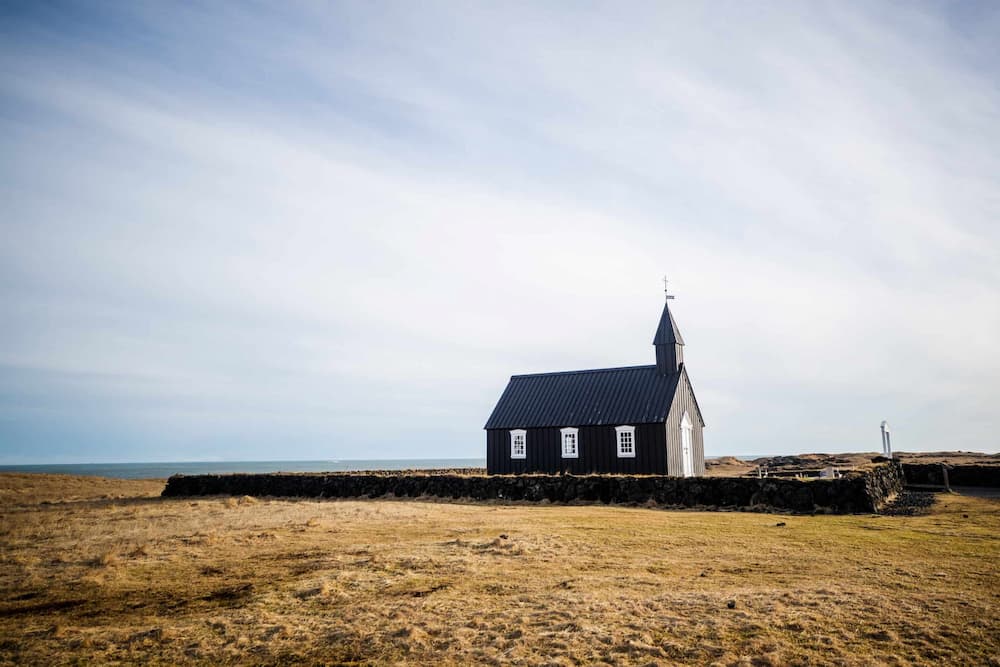
Búðakirkja, the Black Church of Búðir, has become a popular destination for photographers, who travel to the rural southern side of the peninsula to capture its beauty. [Photo courtesy of Visit Iceland]
Additionally, there are plenty of evaluations. Following an action plan of what Guðrún and each municipality is doing, there is an evaluation at the end of the year to discuss how each project will proceed, with environmental and social factors in mind. The EarthCheck certification also requires an annual third-party performance audit. The benefit of being one of two areas in Iceland with certification (the other being the municipalities in the Westfjords), is the joint effort within the entire community. Many decisions in Snæfellsnes are directly linked to being certified, ensuring continued progress toward sustainability.
Commentary
As a council made up of mayors, the Byggðasamlag Snæfellinga seems to serve technically as the core of the informal network of overlapping organizations that address destination stewardship in Snæfellsnes. Threats of overtourism are weighed against a desire to grow.
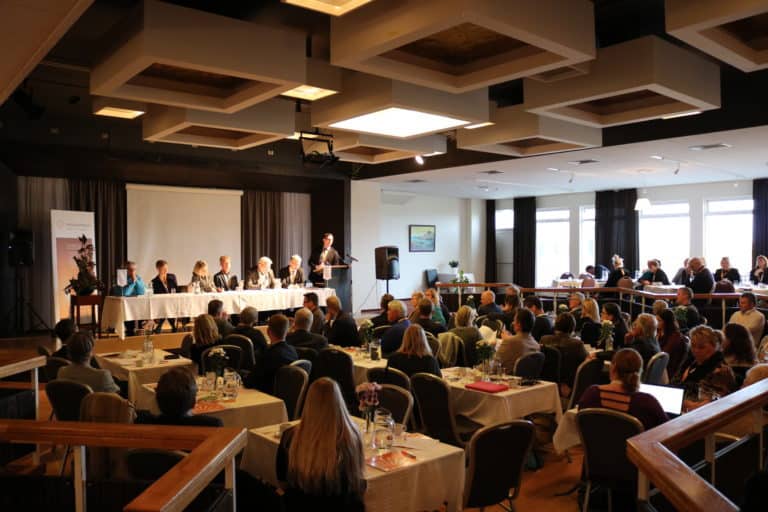
The Iceland Regional Affairs Conference held in Snæfellsnes in 2018. [Photo courtesy of Guðrún Magnea Magnúsdóttir]
Tourism started to increase about 20 years ago, but more rapidly within the last 10. Sustainability seems to have proceeded as well, if haltingly. Snæfellsnes tourism enterprises that are certified have seen results, such as savings from energy efficiency and other best practices. However, getting business to become certified is a challenge, according to the two managers. Businesses are small and mostly rely on busy summer periods. It is costly and takes time and resources to get certified and audited. Since there is little competition, it is not very compelling.
Economic, cultural, and ecological factors all come into play. “With elections bringing in a new board of municipalities, it is kind of political,” says Guðrún. She lists the major challenges:
- Politics
- Budgets to finance the program
- Mobilizing the community
- Reaching out to inform visitors – Mainly because of budget limitations, the villages don’t have the resources, the marketing, the informational signs, nor anyone for managing tourism.
Some say it would make sense for the regional park to manage all of it, but that will take more resources and collaboration. Meanwhile the certification consultant, EarthCheck, provides some measure of continuity, if tipped strongly toward environment over social and cultural sustainability. Snæfellsnes’s current governance arrangement may seem somewhat messy, but the destination is of manageable size, there is broad cultural support for sustainability, and the outlook encouraging. Perhaps that Icelandic aphorism does apply: “It will work out.”
About the Author
Tiffany Chan is a Destinations Program and Communications Coordinator at GSTC. Based in Squamish, British Columbia, she is an outdoor enthusiast and advocate for protecting wild places for future generations to explore.




